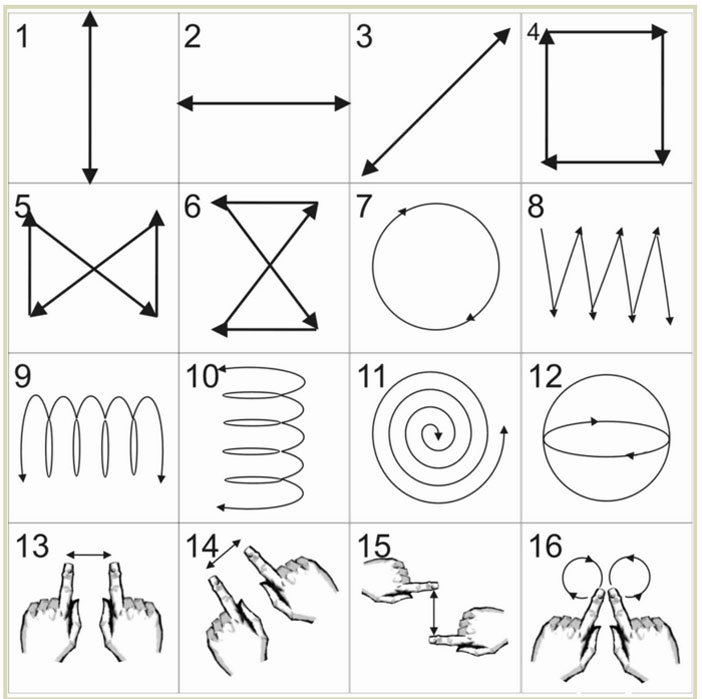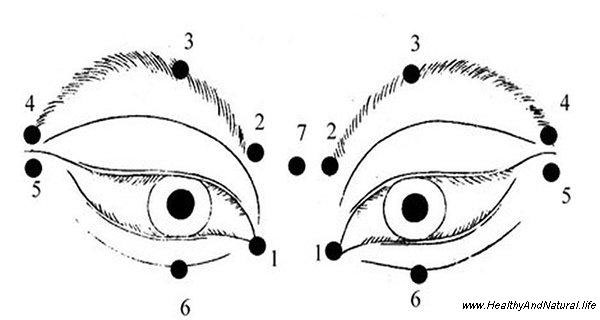Ayurvedic Guidelines To Prevent Hair Loss And Gray Hair
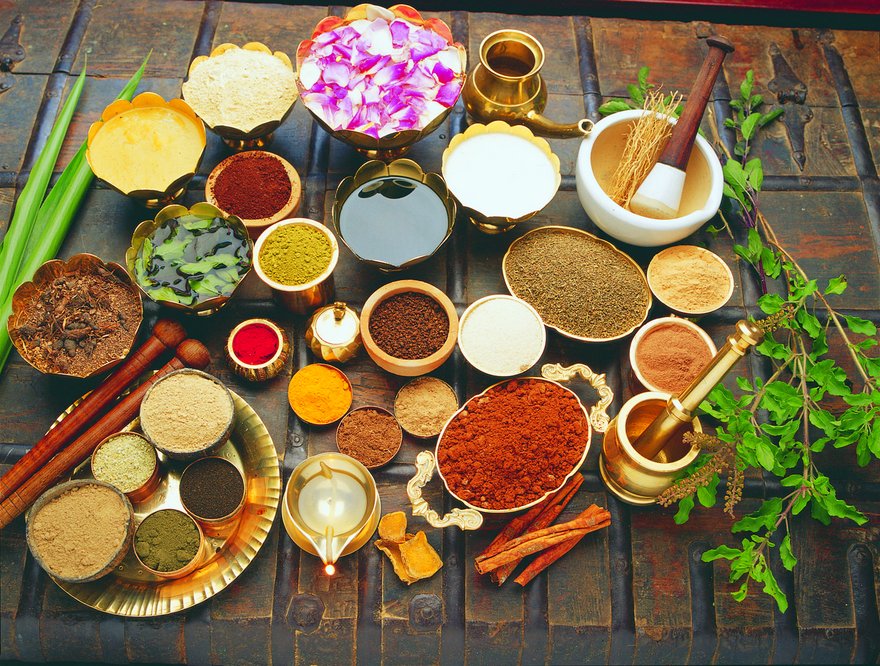
In Ayurveda, hair fall is referred to as ‘khalitya’ and premature graying of hair is termed as ‘palitya’. Both khalitya and Palitya are considered as pure paitik (arising out of ‘pitta’) disorders.
It means, when you continuously disturb ‘pitta’ (heat in your body), it can gray your hair. So, according to Ayurveda, if you consume pitta enhancing substances, your pitta aggravates and cause gray hair. From ayurvedic point of view, good hair growth is linked to one’s physical and mental health. When one is cheerful, the hair looks lively, alternatively when one is feeling depressed and pessimistic, the hair acquires a fallen and lifeless look.
According to Ayurveda, hair is a byproduct of bone formation and the tissue responsible for building bones is also responsible for the growth of hair.
Early hair loss is related to body type and the balance of the mind-body constitution (doshas). Any problem with the hair will always indicate a dosha imbalance as well as a disequilibrium in the activities of your mind. People who have excess Pitta in their body are likely to lose their hair early in life, or have prematurely thin or gray hair. Excess Pitta in the sebaceous gland, at the root of the hair, or folliculitis can also lead to hair loss.
Ayurveda recommends specialized home remedies to prevent as well as manage the white hairs all over the body. According to Ayurveda physiology the digestive essence (Rasa element) is responsible for healthy hair both color and structure.

Any pathology affecting this leads to white hair. Correction of the causes with Ayurveda therapies and medicines, bring back the normalcy. Ayurveda says that the white hair after the middle age that is 82 is not reversible.
Symptoms
The only symptom is loss of hair whenever one combs the hair and graying of the hair at an early stage of life. Some systemic symptoms of Pitta aggravation might also be present like acid stomach, nausea, excessive sweating, and intolerance to heat.
Causes
Increased intake of fried, sour, spicy, salty, and fermented foods, as well as tea and coffee, aggravate the Pitta Dosha in the body. This Pitta accumulates in the skin of the scalp, leading to hair falling out and graying prematurely. Factors like excessive anger and stress are also responsible. Excessive consumption of alcohol and meat also aggravate Pitta.
How To Prevent Grey Hair and Loss Of Hair
1. Take treatment for cold:
Don’t let kapha accumulate in your head. People who suffer perpetually from cold are more susceptible to get grey hair at an early age. Do not take a persisting common cold lightly. Seek treatment.
2. Take treatment for sinusitis:
Do not neglect sinusitis. It has adverse effect on hair.
3. Good Digestion:
Make sure that your digestive system functions well, your liver is healthy and you do not suffer from other gastric troubles. A sluggish liver and other digestive problems promote hair loss and turn the hair grey.
4. Head Massage:

Regular care and an ayurvedic massage of the head is essential to revitalize the scalp.
5. Apply Essential Oils:
Bhringaraaja referred to as keshraja or ‘king of the hair’ is an excellent rejuvenator. It also promotes hair growth and makes it black and lustrous. It is the best known herb to effectively stop and reverse balding and premature graying. It cools the brain and helps calm the mind from excessive activity, thus promoting sound sleep. Bhringaraaja is taken internally and used externally as Bhringraj oil.
6. Eat Copper Rich Foods:
Sometimes grey hair begins to appear due to lack of copper in your diet. Take a multi-vitamin daily as most of them contain copper. Foods that are rich in copper are turnip greens, lima beans, yams, and spinach. Copper is also found in blackberries, pineapple, pomegranates, almonds and pumpkin seeds.
Yoga To Prevent Hair Loss And Gray Hair
According to yoga, nerve endings below the fingernails are directly connected to the roots of a person’s hair. Rubbing the nails against one another improves the blood circulation in the scalp, which in turn reduces grey hair. Yoga Asana and Kapalbhati is also said to help in arresting the greying process.
1. Prasana Mudra:
Keep hand near the chest. Rub the nails of the eight fingers against each other for 5 to 10 minutes for 30 days. The thumbs should be straight.
Benefits:
This slows down hair loss, with reduction of gray hair and split ends. It makes hair lustrous and strong.
2. Mandukasana
Mandukasana is very good for premature greying hair and help to stop further graying of hair. It is also useful for some other illness like constipation, diabetes and digestive disorders, effectively reduce weight of thighs, hips and the abdomen. This asana strengthens the lower parts of the loins.

Diet
1. Avoid Pitta-aggravating foods like spicy, heavy, and oily foods, as well as tea and coffee.
2. Avoid refined foods, refined sugar, junk food, and alcoholic and carbonated drinks.
3. Increase intake of fresh fruits, green leafy vegetables, and vegetable juice prepared from lettuce, carrot, capsicum, and alfalfa.
Daily Hair Care
Always, keep in mind hair are an essential part of our body and need special attention and care. Handle your hair gently. Whenever possible, allow your hair to air-dry naturally, Avoid compulsively twisting, rubbing or pulling your hair.
1. Cleanliness:
To begin with, everything used for the hair should be clean. Brushes should be of good quality. Remember, combs should always be blunt-toothed.
Both combs and brushes should be washed twice a week, and kept in a bag, which should be washed frequently. Both the brain and scalp prefer to be kept cool, so whenever washing the hair, it is best to use lukewarm water and a cool water rinse. It helps in toning the scalp and refreshing the nervous system.
2. Massage:
Massage of the scalp is perhaps the best method for keeping your hair healthy and preventing hair loss. Though a good massage can be given with blunt-toothed comb, the best way is to massage with hands. The thumbs should be placed at the back of the ears, and the scalp rotated under the fingertips.

Ensure that the scalp is also moved, apart from the fingers. Then, deep pressure should be applied with palms pressed firmly against the scalp. This ensures good circulation and an increased blood-supply to the hair-roots. A head massage helps relieve tension, improves circulation, and strengthens the hair roots.
3. Shampooing / Cleaning:
The purpose of shampooing is to remove any dirt or impurities from hair making them clean and tidy. Harsh shampoos will just cause the sebaceous gland to overcompensate by producing more oil than necessary. It is advisable to wash your hair daily or alternate days using Amazing Herbal shampoo or any baby shampoo diluted with water.
Traditionally, powdered herbs are used to cleanse the hair, which remove dirt without disturbing the natural functioning of the scalp. You can also prepare your own wet shampoo. Take one tablespoonful of grated or powdered ritha and shikakai.
Add a handful of herbs (according to the need) and boil in half pint of water. Alternately, you can pour the boiling water over the mixture also. Allow it to cool. Strain and use as you would use your regular shampoo.
The foam of the chemical shampoos has little to do with the cleaning effect. They are simple and harsh chemicals which strip the outer protein layer of the hair and dry the scalp, making the use of conditioners necessary.
4. Conditioning:
Artificial conditioners do little more than provide an oily film that traps dirt and makes the hair look dull. If one feels the use of conditioners that are essential, one can always prepare an effective conditioner at home: mix sugar or honey, lemon juice and water in the ratio of 2:1:5.
Prepare the needed quantity depending upon the length of your hair. After washing the hair, rub this mixture over the entire scalp and the hair thoroughly. Rinse it after about a minute. If you have dry scalp or if the skin keeps peeling off, use a mixture of yasthimadhu (Liquorice/Glyccyrrhiza glabra) roots.
After washing the hair, apply this mixture all over the scalp, rubbing and massaging with the fingers. Leave it on for two-three minutes and then rinse once again with water.
5. Proper Combing:
You should comb your hair every day with careful gentle 15-20 strokes. Combing the scalp helps keep your hair healthy and can also promote hair growth. It also an effective way to relax. It, which in turn prevents and fights avoidable hair loss, and re-establishes the natural development of healthy hair.
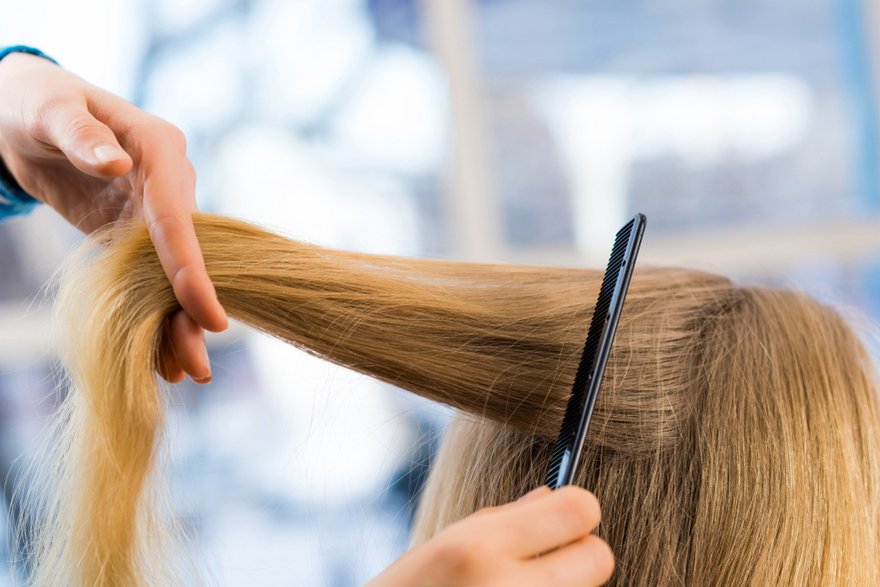
Hair should be brushed well for five minutes at night and in the morning, preferably in front of an open window, as air is necessary for healthy air. Brushing should not be so vigorous as to stretch the hair, as it will weaken the hair. Brushing the hair from back to front ventilates the scalp.
Panchkarma Therapy
Panchkarma like Virechana, Nasya and Shirodhara are also very useful for gray hair. Virechan helps balance vitiated Pitta Dosha, so helps to reduce gray hair. Best oil for Nasya is Shadbindu Oil, Neem oil or Yashtimadhu Oil. Shirodhara with Bhringraj Oil, or Neeli Oil can help to reduce hair fall and gray hair.
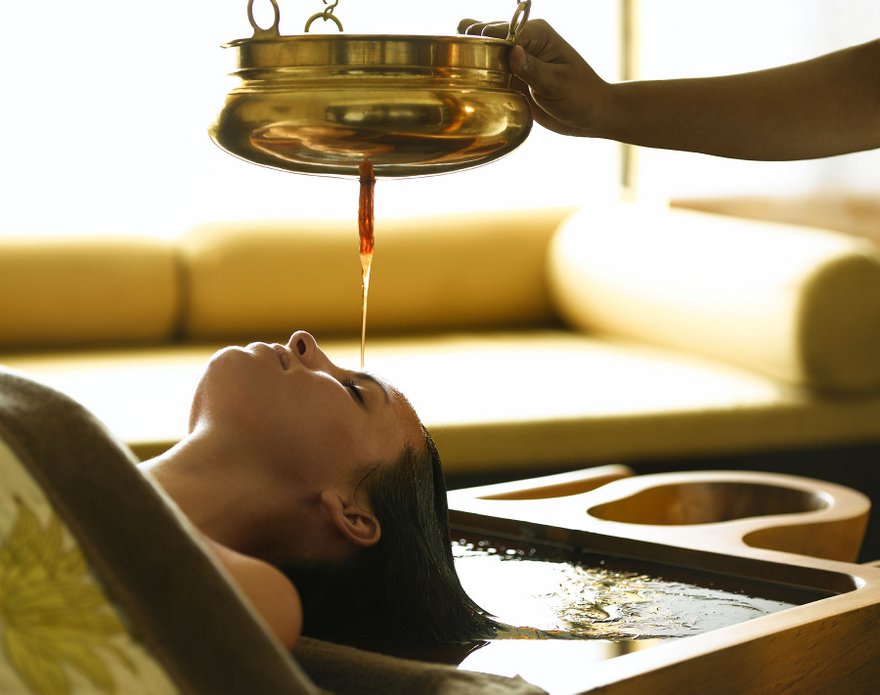
Regular massage hair with Til Oil (prepared with Amla – Indian Gooseberry, Neem and Yashtimadhu – Liquorice) helps prevent hair loss. Applying Ghee (made from cow milk) before sleep on bottom of the feet with bronze vessel, this will help to convert gray hair into black.
Narasimha Rasayanam is a very famous Ayurvedic medicine, in herbal butter form.This medicine has butter as its base. It is used for preparatory procedure for Panchakarma and also as medicine for the treatment of weakness, weight gain, hair growth and rejuvenation. It is also known as Narasimha Rasayana, Narasimha Rasayan
Narasimha Rasayanam benefits:
It is widely used as medicine and also in preparatory procedure called snehakarma for the treatment of weight gain, to improve muscle mass and strength, improves hair growth, improves intelligence, and rejuvenation. It helps to relieve from being tired all the time.
Effect on Tridosha – Calms Pitta, Kapha and Vata
Narasimha Rasayana dosage:
As medicine – quarter to half teaspoon with water, usually before food, once or twice a day, or as directed by Ayurvedic doctor.
For Panchakarma preparation – Snehana procedure, the dose depends on the disease status and the judgement of Ayurvedic doctor.
It is usually administered with warm water, honey or milk.
Narasimha Rasayana Side Effects:
There are no known side effects with this medicine. However it is best to use this product under medical supervision. Self medication with this medicine is discouraged.
People with diabetes, high cholesterol, heart diseases and high BP should excise precaution.
In very high dose, it may cause diarrhoea and indigestion.
Narasimha Rasayana Ingredients:
1 part of each of
Gayatri (Acacia catechu)
Shikhi (Plumbago zeylanica)
Shimshapa (Dalbergia sissoo)
Asana (Pterocarpus marsupium)
Shiva (Terminalia chebula)
Vella (Embelia ribes)
Akshaka (Terminalia bellirica)
Arushkara (purified Semecarpus anacardium)
Ayas – Iron plates – 8 parts
water for decoction – 16 times, boiled and reduced to 4 parts.
Ksheera – equal to decoction
Bharnga niryasa – (Elcipta alba) – 2 times of decoction
Vara kashaya (Haritaki, Vibhitaki and Amla)
Haiyangaveena – Butter
The above combination is heated till herbal butter is prepared.
Narasimha Rasayana reference: Ashtanga Hrudaya Uttara tantra 39/170 – 172
Shelf life: 3 years from the date of manufacture.
Manufacturer: Arya Vaidya Sala, Kottakkal.
Presentation: Jar pack of 200 gram

In Ayurveda, hair fall is referred to as ‘khalitya’ and premature graying of hair is termed as ‘palitya’. Both khalitya and Palitya are considered as pure paitik (arising out of ‘pitta’) disorders.
It means, when you continuously disturb ‘pitta’ (heat in your body), it can gray your hair. So, according to Ayurveda, if you consume pitta enhancing substances, your pitta aggravates and cause gray hair. From ayurvedic point of view, good hair growth is linked to one’s physical and mental health. When one is cheerful, the hair looks lively, alternatively when one is feeling depressed and pessimistic, the hair acquires a fallen and lifeless look.
According to Ayurveda, hair is a byproduct of bone formation and the tissue responsible for building bones is also responsible for the growth of hair.
Early hair loss is related to body type and the balance of the mind-body constitution (doshas). Any problem with the hair will always indicate a dosha imbalance as well as a disequilibrium in the activities of your mind. People who have excess Pitta in their body are likely to lose their hair early in life, or have prematurely thin or gray hair. Excess Pitta in the sebaceous gland, at the root of the hair, or folliculitis can also lead to hair loss.
Ayurveda recommends specialized home remedies to prevent as well as manage the white hairs all over the body. According to Ayurveda physiology the digestive essence (Rasa element) is responsible for healthy hair both color and structure.

Any pathology affecting this leads to white hair. Correction of the causes with Ayurveda therapies and medicines, bring back the normalcy. Ayurveda says that the white hair after the middle age that is 82 is not reversible.
Symptoms
The only symptom is loss of hair whenever one combs the hair and graying of the hair at an early stage of life. Some systemic symptoms of Pitta aggravation might also be present like acid stomach, nausea, excessive sweating, and intolerance to heat.
Causes
Increased intake of fried, sour, spicy, salty, and fermented foods, as well as tea and coffee, aggravate the Pitta Dosha in the body. This Pitta accumulates in the skin of the scalp, leading to hair falling out and graying prematurely. Factors like excessive anger and stress are also responsible. Excessive consumption of alcohol and meat also aggravate Pitta.
How To Prevent Grey Hair and Loss Of Hair
1. Take treatment for cold:
Don’t let kapha accumulate in your head. People who suffer perpetually from cold are more susceptible to get grey hair at an early age. Do not take a persisting common cold lightly. Seek treatment.
2. Take treatment for sinusitis:
Do not neglect sinusitis. It has adverse effect on hair.
3. Good Digestion:
Make sure that your digestive system functions well, your liver is healthy and you do not suffer from other gastric troubles. A sluggish liver and other digestive problems promote hair loss and turn the hair grey.
4. Head Massage:

Regular care and an ayurvedic massage of the head is essential to revitalize the scalp.
5. Apply Essential Oils:
Bhringaraaja referred to as keshraja or ‘king of the hair’ is an excellent rejuvenator. It also promotes hair growth and makes it black and lustrous. It is the best known herb to effectively stop and reverse balding and premature graying. It cools the brain and helps calm the mind from excessive activity, thus promoting sound sleep. Bhringaraaja is taken internally and used externally as Bhringraj oil.
6. Eat Copper Rich Foods:
Sometimes grey hair begins to appear due to lack of copper in your diet. Take a multi-vitamin daily as most of them contain copper. Foods that are rich in copper are turnip greens, lima beans, yams, and spinach. Copper is also found in blackberries, pineapple, pomegranates, almonds and pumpkin seeds.
Yoga To Prevent Hair Loss And Gray Hair
According to yoga, nerve endings below the fingernails are directly connected to the roots of a person’s hair. Rubbing the nails against one another improves the blood circulation in the scalp, which in turn reduces grey hair. Yoga Asana and Kapalbhati is also said to help in arresting the greying process.
1. Prasana Mudra:
Keep hand near the chest. Rub the nails of the eight fingers against each other for 5 to 10 minutes for 30 days. The thumbs should be straight.
Benefits:
This slows down hair loss, with reduction of gray hair and split ends. It makes hair lustrous and strong.
2. Mandukasana
Mandukasana is very good for premature greying hair and help to stop further graying of hair. It is also useful for some other illness like constipation, diabetes and digestive disorders, effectively reduce weight of thighs, hips and the abdomen. This asana strengthens the lower parts of the loins.

Diet
1. Avoid Pitta-aggravating foods like spicy, heavy, and oily foods, as well as tea and coffee.
2. Avoid refined foods, refined sugar, junk food, and alcoholic and carbonated drinks.
3. Increase intake of fresh fruits, green leafy vegetables, and vegetable juice prepared from lettuce, carrot, capsicum, and alfalfa.
Daily Hair Care
Always, keep in mind hair are an essential part of our body and need special attention and care. Handle your hair gently. Whenever possible, allow your hair to air-dry naturally, Avoid compulsively twisting, rubbing or pulling your hair.
1. Cleanliness:
To begin with, everything used for the hair should be clean. Brushes should be of good quality. Remember, combs should always be blunt-toothed.
Both combs and brushes should be washed twice a week, and kept in a bag, which should be washed frequently. Both the brain and scalp prefer to be kept cool, so whenever washing the hair, it is best to use lukewarm water and a cool water rinse. It helps in toning the scalp and refreshing the nervous system.
2. Massage:
Massage of the scalp is perhaps the best method for keeping your hair healthy and preventing hair loss. Though a good massage can be given with blunt-toothed comb, the best way is to massage with hands. The thumbs should be placed at the back of the ears, and the scalp rotated under the fingertips.

Ensure that the scalp is also moved, apart from the fingers. Then, deep pressure should be applied with palms pressed firmly against the scalp. This ensures good circulation and an increased blood-supply to the hair-roots. A head massage helps relieve tension, improves circulation, and strengthens the hair roots.
3. Shampooing / Cleaning:
The purpose of shampooing is to remove any dirt or impurities from hair making them clean and tidy. Harsh shampoos will just cause the sebaceous gland to overcompensate by producing more oil than necessary. It is advisable to wash your hair daily or alternate days using Amazing Herbal shampoo or any baby shampoo diluted with water.
Traditionally, powdered herbs are used to cleanse the hair, which remove dirt without disturbing the natural functioning of the scalp. You can also prepare your own wet shampoo. Take one tablespoonful of grated or powdered ritha and shikakai.
Add a handful of herbs (according to the need) and boil in half pint of water. Alternately, you can pour the boiling water over the mixture also. Allow it to cool. Strain and use as you would use your regular shampoo.
The foam of the chemical shampoos has little to do with the cleaning effect. They are simple and harsh chemicals which strip the outer protein layer of the hair and dry the scalp, making the use of conditioners necessary.
4. Conditioning:
Artificial conditioners do little more than provide an oily film that traps dirt and makes the hair look dull. If one feels the use of conditioners that are essential, one can always prepare an effective conditioner at home: mix sugar or honey, lemon juice and water in the ratio of 2:1:5.
Prepare the needed quantity depending upon the length of your hair. After washing the hair, rub this mixture over the entire scalp and the hair thoroughly. Rinse it after about a minute. If you have dry scalp or if the skin keeps peeling off, use a mixture of yasthimadhu (Liquorice/Glyccyrrhiza glabra) roots.
After washing the hair, apply this mixture all over the scalp, rubbing and massaging with the fingers. Leave it on for two-three minutes and then rinse once again with water.
5. Proper Combing:
You should comb your hair every day with careful gentle 15-20 strokes. Combing the scalp helps keep your hair healthy and can also promote hair growth. It also an effective way to relax. It, which in turn prevents and fights avoidable hair loss, and re-establishes the natural development of healthy hair.

Hair should be brushed well for five minutes at night and in the morning, preferably in front of an open window, as air is necessary for healthy air. Brushing should not be so vigorous as to stretch the hair, as it will weaken the hair. Brushing the hair from back to front ventilates the scalp.
Panchkarma Therapy
Panchkarma like Virechana, Nasya and Shirodhara are also very useful for gray hair. Virechan helps balance vitiated Pitta Dosha, so helps to reduce gray hair. Best oil for Nasya is Shadbindu Oil, Neem oil or Yashtimadhu Oil. Shirodhara with Bhringraj Oil, or Neeli Oil can help to reduce hair fall and gray hair.

Regular massage hair with Til Oil (prepared with Amla – Indian Gooseberry, Neem and Yashtimadhu – Liquorice) helps prevent hair loss. Applying Ghee (made from cow milk) before sleep on bottom of the feet with bronze vessel, this will help to convert gray hair into black.
Narasimha Rasayanam: Uses, Dose, Side Effects, Ingredients
Narasimha Rasayanam is a very famous Ayurvedic medicine, in herbal butter form.This medicine has butter as its base. It is used for preparatory procedure for Panchakarma and also as medicine for the treatment of weakness, weight gain, hair growth and rejuvenation. It is also known as Narasimha Rasayana, Narasimha Rasayan
Narasimha Rasayanam benefits:
It is widely used as medicine and also in preparatory procedure called snehakarma for the treatment of weight gain, to improve muscle mass and strength, improves hair growth, improves intelligence, and rejuvenation. It helps to relieve from being tired all the time.
Effect on Tridosha – Calms Pitta, Kapha and Vata
Narasimha Rasayana dosage:
As medicine – quarter to half teaspoon with water, usually before food, once or twice a day, or as directed by Ayurvedic doctor.
For Panchakarma preparation – Snehana procedure, the dose depends on the disease status and the judgement of Ayurvedic doctor.
It is usually administered with warm water, honey or milk.
Narasimha Rasayana Side Effects:
There are no known side effects with this medicine. However it is best to use this product under medical supervision. Self medication with this medicine is discouraged.
People with diabetes, high cholesterol, heart diseases and high BP should excise precaution.
In very high dose, it may cause diarrhoea and indigestion.
Narasimha Rasayana Ingredients:
1 part of each of
Gayatri (Acacia catechu)
Shikhi (Plumbago zeylanica)
Shimshapa (Dalbergia sissoo)
Asana (Pterocarpus marsupium)
Shiva (Terminalia chebula)
Vella (Embelia ribes)
Akshaka (Terminalia bellirica)
Arushkara (purified Semecarpus anacardium)
Ayas – Iron plates – 8 parts
water for decoction – 16 times, boiled and reduced to 4 parts.
Ksheera – equal to decoction
Bharnga niryasa – (Elcipta alba) – 2 times of decoction
Vara kashaya (Haritaki, Vibhitaki and Amla)
Haiyangaveena – Butter
The above combination is heated till herbal butter is prepared.
Narasimha Rasayana reference: Ashtanga Hrudaya Uttara tantra 39/170 – 172
Shelf life: 3 years from the date of manufacture.
Manufacturer: Arya Vaidya Sala, Kottakkal.
Presentation: Jar pack of 200 gram
http://ayurmedinfo.com/2012/02/24/narasimha-rasayana-benefits-dosage-how-to-use-side-effects-ingredients-reference/





